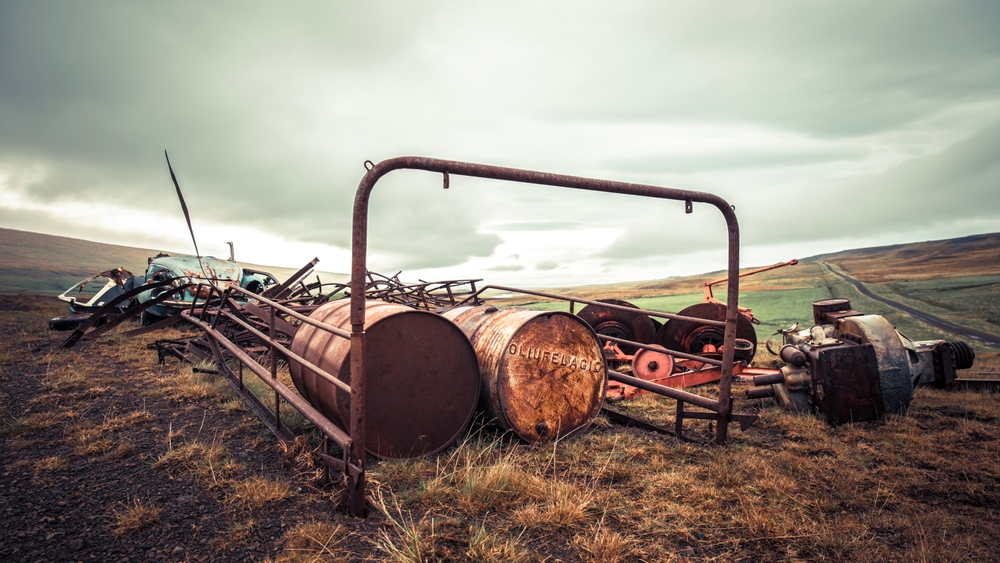The Environmental Impact of Improper Tank Removal

Tank removal is a crucial process that often goes unnoticed until a problem arises. Whether it’s an old oil tank, a fuel tank, or a water tank, improper removal can have serious environmental consequences. In this blog, we will explore the environmental risks associated with improper tank removal and how it affects groundwater.
What is Tank Removal?
Tank removal is the process of safely and effectively removing tanks from a property. This can involve various types of tanks, including those used for storing oil, fuel, water, or chemicals. The removal process is not just about physically extracting the tank; it also involves proper handling and disposal of any residual contents and materials.
Why is Proper Tank Removal Important?
Proper tank removal is essential to prevent environmental contamination. Tanks, especially those that have been in place for many years, can corrode or develop leaks, leading to hazardous substances seeping into the environment. Proper removal ensures that these risks are mitigated and that the area is left safe and clean.
Environmental Risks of Improper Tank Removal
Leaks and Spills
One of the most immediate environmental risks of improper tank removal is the potential for leaks and spills. Tanks that are not removed correctly can rupture, causing their contents to spill into the surrounding soil. These leaks can be harmful, especially if the tank was used to store hazardous materials such as oil or chemicals.
Soil Contamination
When a tank leaks, the chemicals or fuels it contained can seep into the soil, leading to soil contamination. Contaminated soil can be challenging and expensive to remediate, and it can affect plant growth and wildlife. In some cases, the contamination can persist for years, causing long-term damage to the ecosystem.
Air Quality Issues
Leaks from tanks can also affect air quality. For example, if a tank containing volatile organic compounds (VOCs) ruptures, these compounds can evaporate into the air. VOCs can contribute to air pollution and pose health risks to humans and animals.
Groundwater Contamination
How Does Improper Tank Removal Affect Groundwater?
Groundwater contamination is one of the most significant environmental concerns associated with improper tank removal. If a tank leaks, the contaminants can travel through the soil and reach the groundwater. This is particularly concerning because groundwater is a critical source of drinking water for many communities.
Pathways of Contamination
Contaminants from a leaking tank can enter groundwater through various pathways:
- Direct Leaks: If the tank is not removed properly and leaks, the contaminants can directly enter the groundwater.
- Soil Permeability: The rate at which contaminants move through the soil depends on the soil’s permeability. Sandy soils, for example, allow contaminants to move more quickly than clay soils.
- Groundwater Flow: Groundwater naturally flows from higher to lower elevations. If a tank is located on a slope, contaminants can travel long distances before reaching a well or water source.
Impact on Drinking Water
Contaminated groundwater can make its way into drinking water supplies, posing serious health risks. Contaminants such as petroleum hydrocarbons, heavy metals, and chemicals can affect water quality and make it unsafe for consumption. This can lead to a range of health issues, including gastrointestinal problems, neurological effects, and even cancer.
Ecosystem Damage
Improper tank removal can also have broader impacts on local ecosystems. When soil and groundwater are contaminated, it can affect plant and animal life. For example:
- Plant Life: Contaminated soil can hinder plant growth and reduce biodiversity. Plants that are exposed to contaminated soil may not thrive, leading to decreased vegetation and habitat loss.
- Animal Life: Animals that rely on contaminated water sources or contaminated soil can suffer from health problems. Contaminants can accumulate in the food chain, affecting predators and prey alike.
The Importance of Professional Tank Removal
Why Hire Professionals?
Given the risks associated with improper tank removal, it is essential to hire professionals for the job. Professional tank removal companies have the expertise and equipment to handle the process safely and efficiently. They can:
- Ensure Proper Procedures: Professionals follow established procedures to remove tanks and handle residual materials safely.
- Conduct Thorough Inspections: They can assess the condition of the tank and the surrounding area to identify any potential issues.
- Manage Disposal: Professionals are equipped to dispose of tank contents and materials in compliance with environmental regulations.
Regulatory Compliance
Professional tank removal companies also ensure that the removal process complies with local, state, and federal regulations. These regulations are designed to protect the environment and public health, and failing to adhere to them can result in legal and financial consequences.
Steps for Proper Tank Removal
Preparation
Before removing a tank, it is essential to prepare the site. This involves:
- Locating the Tank: Identifying the exact location of the tank and any associated pipelines or equipment.
- Assessing Risks: Evaluating potential risks such as leaks or contamination.
Removal Process
The actual removal process involves:
- Draining Contents: Safely removing any contents from the tank.
- Dismantling the Tank: Carefully dismantling and removing the tank.
- Cleaning Up: Addressing any spills or leaks that may have occurred during removal.
Post-Removal Actions
After the tank is removed, it is crucial to:
- Test Soil and Groundwater: Conduct tests to check for contamination and address any issues if necessary.
- Restore the Site: Rehabilitate the site to ensure it is safe and environmentally stable.
Conclusion
Improper tank removal poses significant environmental risks, including soil and groundwater contamination, air quality issues, and ecosystem damage. It is crucial to follow proper procedures and hire professional services to ensure safe and effective tank removal. By doing so, we can protect our environment, safeguard our drinking water, and maintain healthy ecosystems.


